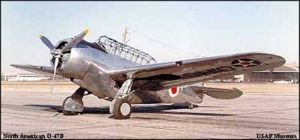PlaneSpottingWorld welcomes all new members! Please gives your ideas at the Terminal.
North American O-47

The North American O-47 was an observation airplane used by the United States Army Air Corps.
The O-47 was developed as a replacement for O-19 and Douglas O-38 observation biplanes. It was larger and heavier than most preceding observation aircraft and its crew of three sat in tandem under the long canopy. Windows in the deep belly overcame the obstacle that the wings presented to downward observation and photography. The design for the XO-47 prototype originated in 1934 with General Aviation, a subsidiary of North American Aviation, as the GA-15. The Air Corps ordered 174 O-47s in 1937 to 1938, 93 of which were assigned to National Guard units. In 1938, the Army ordered 74 O-47Bs with a redesigned engine cowling for better cooling, a more powerful engine, and improved radio equipment.
Training maneuvers in 1941 demonstrated the shortcomings of the O-47. Light airplanes proved more capable of operating with ground troops, while fighters and twin-engine bombers showed greater ability to perform recon and photo duties. Thus, during WW II, O-47s were relegated to such duties as towing targets, coastal patrol, and anti-submarine patrol.
Museum displays
Specifications and performance
- Span: 46 ft 4 in (14.1 m)
- Length: 33 ft 3 in. (10.1 m)
- Height: 13 ft 9 in (14.2 m)
- Armament: One fixed forward-firing .30-cal (7.62 mm) machine gun and one flexible .30-cal (7.62 mm) machine gun in rear cockpit.
- Engine: Wright R-1820 of 1,060 hp (790 kW)
- Crew: 3
- Maximum speed: 227 mph (365 km/h)
- Cruising speed: 200 mph (322 km/h)
- Range: 840 miles (1,352 km)
- Service Ceiling: 24,100 ft (7,346 m)
Lists relating to aviation | |
|---|---|
| General | Timeline of aviation · Aircraft · Aircraft manufacturers · Aircraft engines · Aircraft engine manufacturers · Airports · Airlines |
| Military | Air forces · Aircraft weapons · Missiles · Unmanned aerial vehicles (UAVs) · Experimental aircraft |
| Notable incidents and accidents | Military aviation · Airliners · General aviation · Famous aviation-related deaths |
| Records | Flight airspeed record · Flight distance record · Flight altitude record · Flight endurance record · Most produced aircraft |
